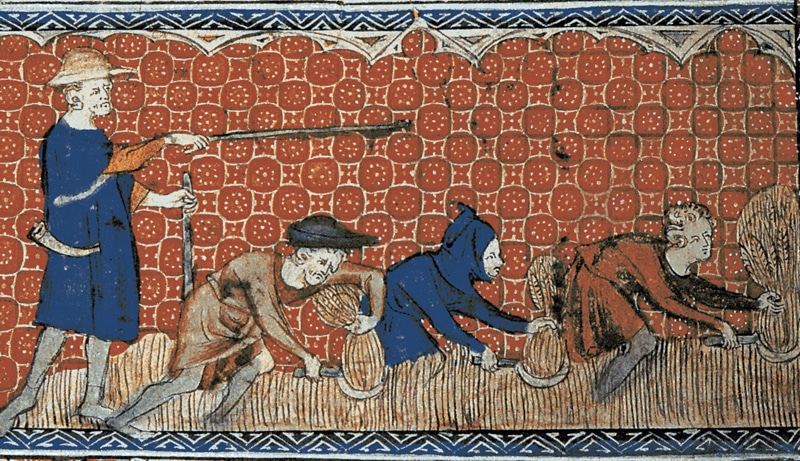Shop our historical maps
History
Serfdom and forced labour in the Middle Ages and today

Apr
Share on FacebookShare on WhatsAppShare on TelegramShare on X (Twitter)Dick Harrison skrev i helgen om hur herremännen misslyckades med att införa livegenskap i Sverige under medeltiden. Här kommer lite om livegenskap, medeltidens tvångsdagsverken och nutidens tvångsdagsverken åt svenska staten och ”välfärden”: Livegenskap var en form av slaveri […]
Dick Harrison wrote this weekend about how the lords failed to introduce serfdom in Sweden during the Middle Ages. Here's a bit about serfdom, medieval forced labour and today's forced labour for the Swedish state and "welfare":
Life Science was a form of slavery that was common on the continent and mainly applied to farmers who did not own their own land. Being a serf meant being obliged to live and work in a designated place. They were not allowed to move without the landowner's permission but were "tied to the turf" as Harrison writes.
In addition, they were forced to work for the lord of the manor for a certain number of days each year, known as day labour, often during sowing and harvesting.
(Book tip: Illegal day jobs are a main topic in Vilhelm Moberg's novel "Ride tonight!". This book is highly recommended.)
As a reward for the serf's work, they were entitled to protection, justice and to cultivate certain fields on the land of the lord for their own subsistence.
Harrison mentions an example from Småland where serfdom was tried to be introduced by legislation:
The Växjöstadgan, which was adopted by a meeting of the council in Växjö in midsummer 1414, forbids the commoners in Tiohärad's lagaga to leave their farms before the agreed cleaning period of six years has ended. They must also perform eight days' work per year for their lord.
The lords may have failed in Sweden during the Middle Ages. But consider that with today's tax burden we are de facto forced to do day jobs for the Swedish state, not eight days a year, but over 6 months a year.
There is actually a concept, tax holiday, which refers to the day in the year when the average wage-earner starts working for himself, rather than for the state. On the tax holiday, you have earned as much as you can expect to pay in taxes during the year.
The tax holiday is thus a kind of measure of the tax ratio, presented in the form of a date.
In 2015, the tax holiday fell on 16 July, meaning that the average wage-earner was forced to work 140 days for the state (counting weekdays only).
What about this year? Taxpayers' Association calculates each year which day the tax holiday falls on, but my guess is that they are simply busy counting in all the new state tax increases.
If it was the same as last year, you would only have 75 days left before you get to keep the fruits of your labour. But as I said, this year you can expect more day-work than that because of the new taxes imposed by the government.
The lords of the Middle Ages are probably green with envy in their graves.
Subscribe to YouTube:
If you appreciate Allmogens independent work to portray our fine Swedish history and Nordic culture, you are welcome to buy something nice in the shop or support us with a voluntary donation. Thank you in advance!
Support Allmogens via Swish: 123 258 97 29
Support Allmogens by becoming a member
Support Allmogens in your will








